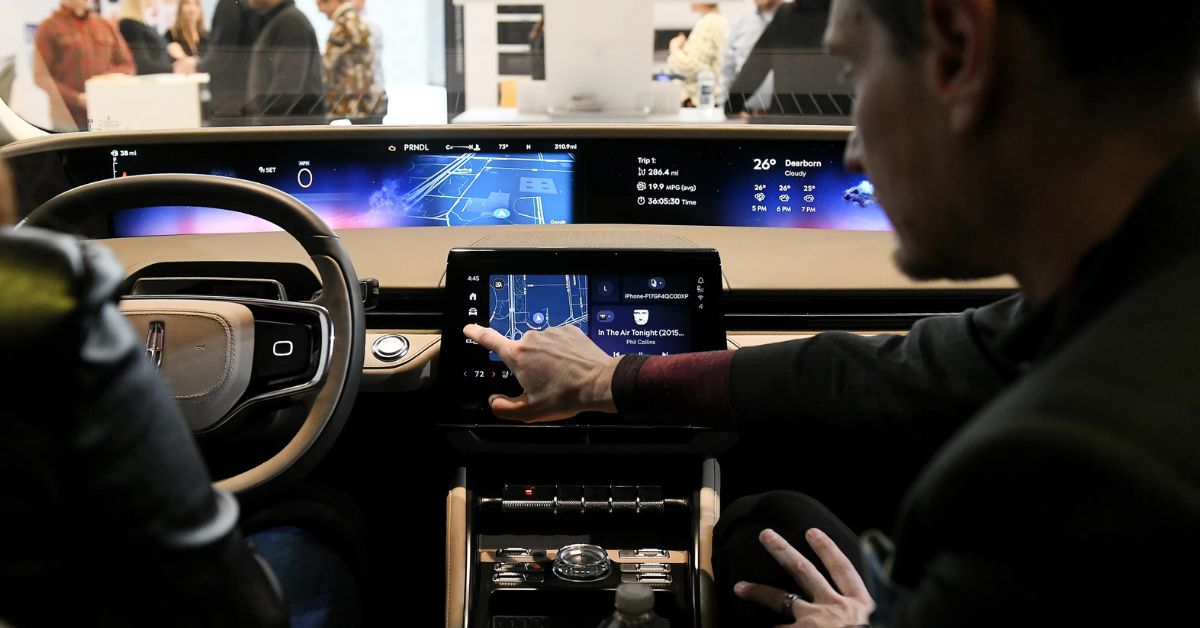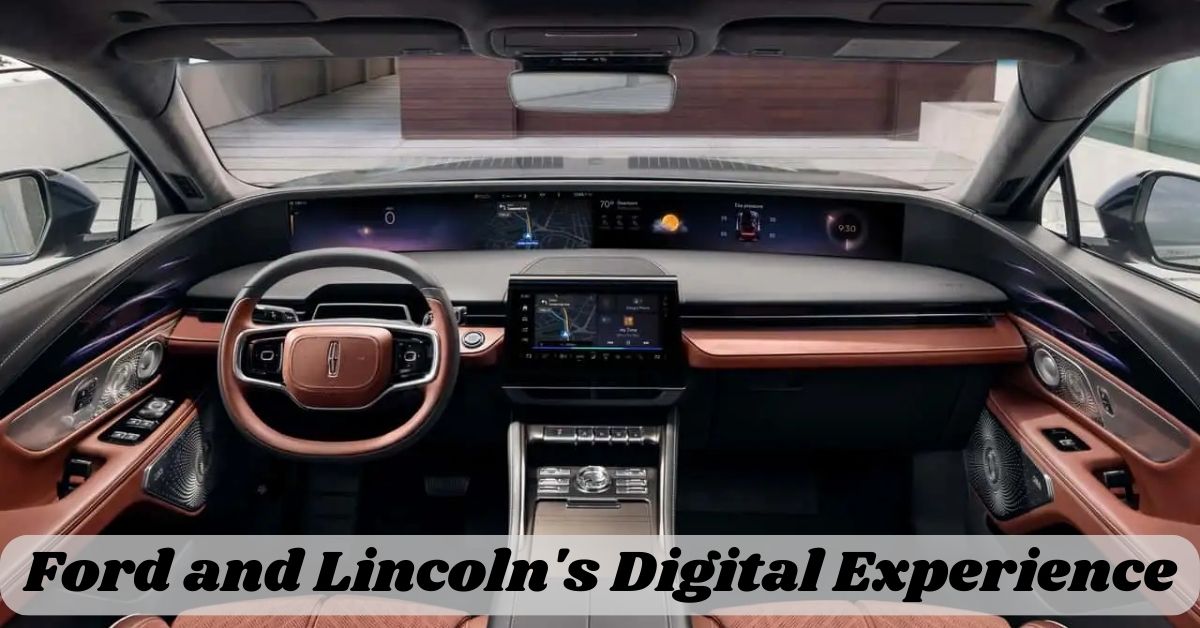Ford and Lincoln’s Digital Experience: This is the next-gen infotainment system from Ford, while Sync 4 will still get updates and support. Customers will be able to connect their digital lifestyle from within the vehicle to their other electronics with the new Android platform-based experience, which is five times faster.
The in-vehicle experience is important for firms to differentiate their products in the marketplace, but it’s also a response to consumers’ expectations that their tech-enabled devices will communicate and function together effortlessly. Ford debuted their new system in the 2024 Lincoln Nautilus SUV.
With the adoption of Android and Google Automotive Services, the Dearborn carmaker follows in the footsteps of other prominent manufacturers such as Volvo, Polestar, Nissan, and Porsche. Unlike GM’s electric vehicles, though, it won’t lock its consumers into using only the native system.
More than half of Ford’s current customers use smartphones, and the digital experience continues to support projections for Android Auto and Apple CarPlay. “Customers are spread across a wide ecosystem of devices and a wide ecosystem of services,” stated Zafar Razzacki, head of future product for EV digital experiences and services.
I have an Android phone, an iPad, and Google Home devices in my home. Along with that, I figure out how to convince everyone to cooperate. To achieve our goal of making the car feel comparable, we must give people the power to choose.
Still, the folks over at Ford are certain that the new technology will be well-received by consumers. That is why the business decided to change the brand for the next generation of products from Sync. “If we think about the origins of Sync, the name comes from the idea of ‘I’m going to bring my phone into the car and sync my phone with my car,'” said Razzacki.
Plus, we set out to make this unique. My phone in the car isn’t the only thing involved. Our ultimate goal is to design an in-car experience that stands on its own.
According to Sam Abuelsamid, an e-mobility researcher for the market research company Guidehouse Inc., if this works, future predictions may be irrelevant: “If it turns out customers decide that they like the built-in system and don’t need CarPlay or Android Auto, we might see automakers follow GM’s lead.”
“Research shows using your smartphone would take your eyes off the road and hands off the wheel, which creates unsafe driving environments,” stated Hadi Saab, Ford’s director of product management and infotainment and interior systems. Saab added that the native system contains a safety feature.

And that’s why we’re putting in extra effort here. Plus, we’re providing a safer option by including speech recognition and projection for our customers. The most noticeable alteration is a panoramic screen with 4k resolution that spans the whole of the windshield and is slightly offset from the dashboard.
According to Christian Dodd, senior design director for the digital experience, the screen is not a touchscreen but rather a cluster that displays important information such as the current speed, fuel level, and BlueCruise details in a hands-free, eyes-on-the-road manner to the driver.
On the passenger side, there is more supportive and “glanceable” information. For example, the driver may have more proximity to navigational aids and less proximity to information like as time, weather, fuel economy, and tire pressure. It is up to the driver to decide what goes where in these widgets.
The objective is to make sure that drivers can see the information that is important to them. Instead of a projected head-up display on the windshield, the screen would serve that purpose. All Nautilus trims include the panoramic screen as standard equipment; future variants may feature additional details about its design.
Although rare, panoramic displays are not unknown. With a price tag of $300,000 and beyond, General Motors’ Cadillac Celestiq boasts a screen that spans the entire width of the vehicle. A panoramic screen was installed on the Lincoln Zephyr in China.
So far, Abuelsamid has only seen it in North America. “It’s about getting it larger and closer to the line of sight, so you’re not looking away from the road as much.” There is still the standard infotainment touchscreen that sits between the driver and passenger in Ford’s digital experience.
At least in the Nautilus, digital scent settings are remembered by the five driver profiles that customers can create. These profiles also remember the climatic conditions, lighting, app accounts (like Spotify), panoramic screen set-up, peddle and mirror locations, and illumination.
You can find a lot of programs, music, and videos in the Google Play store. At rest, passengers have access to a number of entertainment options, including streaming video from Amazon Prime or YouTube, web browsing, and the Ford-exclusive racing game Asphalt Nitro 2. Also compatible are game controllers and keyboards with Bluetooth capabilities.
The developers at Ford are considering the possibility of transferring those experiences to the panoramic screen down the road. The passenger can’t use such applications while the car is in motion, but that might change in the future if researchers can figure out how to make it safe and distraction-free.
Web conferencing apps also allow users to watch and listen. Unfortunately, the car doesn’t include a camera that could capture footage of its passengers. Dodd added that throughout the vehicle setup process and app download, users are asked to consent to data sharing, which addresses other privacy concerns.
Stellantis NV teamed up with TomTom NV for navigation and Amazon for app services in its Uconnect 5 system, which is based on Android. It is Google Maps that Ford’s native system utilizes.
There are fewer controls on the infotainment panel thanks to the new digital interface, but the volume knob is still there. A design reminiscent of a game controller was chosen for the steering wheel by the manufacturer. To change the volume, skip tracks, or tweak the cruise control settings, the driver can use the touchpads on either side of the steering wheel to bring up displays on the panoramic screen directly before of them.
However, the new system is mostly built around voice control. Google Assistant is built in, but users have the option to switch to Amazon Alexa. With Apple CarPlay, you can reach Siri.
An improvement over its predecessor, the cloud-connected assistant now lets users link it to other home gadgets, letting them manage the temperature or lights from anywhere.
“The expectation for the voice assistant experience now is it just knows everything,” said Dodd. “And we will deliver that in addition to the ability to control things in the vehicle, which you will have substantially more control with the vehicle than previously.”
The software relies on a module that merges the infotainment and cluster functions, which were previously independent modules. As part of his software development effort, Ford was tasked with integrating components from several companies, including Google and Amazon.
“We know as we offer those services, the integrated services that we’re building in our vehicle,” Saab said regarding Ford’s digital experience, “customers will start loving ours, as well.”
If you found this technological topic to be enjoyable, you might also be interested in the following:



